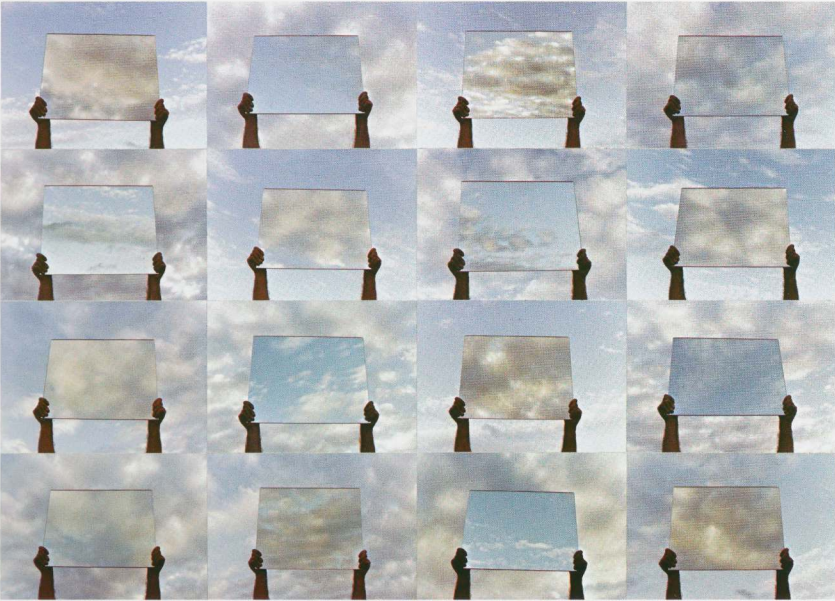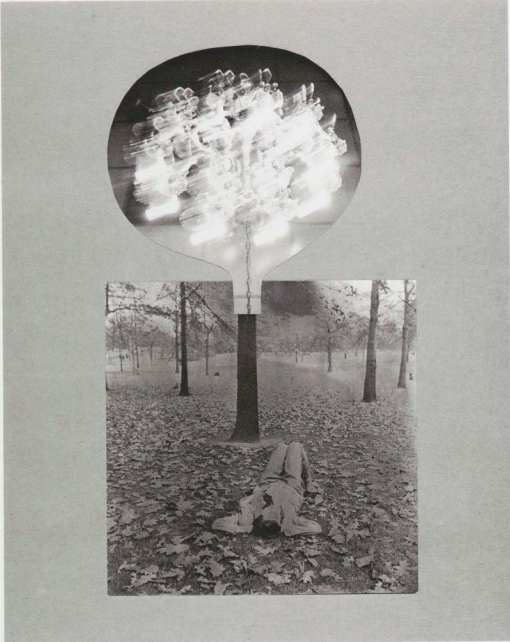Every photograph has an implication. Whether it is to express an emotion, or to demonstrate a beautiful landscape, a photo is taken by a photographer with the intention of showing people something. However, according to John Szarkowski, what the photographer shows is one of two things; a reflection of the photographer “reflecting a portrait of the artist who made it”, or an exploration of the exterior world. Even the world’s first experimental daguerreotype photographs from the early 1800s fall under this distinction.

A daguerreotype is essentially an ionized copper plate coated in silver that is sensitive to light. This makes it possible to create an image on the plate using a camera obscura, an effect which uses a pinhole in a dark box to create an inverted reflection of the world outside of the pinhole, the same effect that our eyes use to see. The plate is then fumed with mercury vapour to freeze the resulting image after the plate is exposed to light for a long enough time. The result is the image above. This photo was taken by Louis Daguerre, the inventor of the daguerreotype, in Paris. What we are actually seeing is a window into the past, a message speaking to us from nearly 200 years ago, and the first ever image of a human being. Through a window into the past, the mirror of a human reflects back at us, a testament to John Szarkowski’s belief that “the two creative motives that have been contrasted here are not discrete”, but ultimately can overlap each other and coexist in a single photo.

Here is an extract from Szarkowski’s book, a piece named “20 minutes in April” by Gary Beydler. Although a mirror is involved in this piece, in my opinion each photo is a window into the randomness of entropy, a snapshot in time that can never be replicated. This piece is rooted in the notion of realism, a demonstration of Gary Beydler’s love for the beauty of this chaotic world. John Szarkowski describes this as a “pursuit of beauty: that formal integrity which pays homage to the dream of meaningful life”, a romantic view of how a photographer can find meaning through the unpredictable nature of the world. However, an alternative realist view is provided by Jed Pearl in his review of Szarkowski’s book. Jed Pearl describes the photos in the book as “predictable images that tell us nothing of life”, demonstrating the realists acceptance of fact; that there exists no deeper meaning to the randomness of clouds, and that any meaning that is found is overruled by logic. In my opinion, I believe that the meaning of one’s life is subjective to their beliefs, and it evolves and changes through time as they develop a greater understanding of the world around them. “20 minutes in April” simply provides an insight into the chaotic and beautiful nature of clouds, however the meaning of this is not directly provided by the creator, Gary Beydler, instead it is meant to be inferred by the viewer to aid them in finding their own meaning to their own life. To state that this piece ‘tells us nothing of life’ is ignorant of this fact, but ultimately it is up to the viewer whether to find meaning or not.

Here is another extract from Szarkowski’s ‘Mirrors and Windows’, a photomontage named ‘A Special Place’ by Joseph Bellanca. The piece consists of two contrasting images, an outdoor photo that depicts a lone woman lying on the woodland floor, and an indoor photo of a bright chandelier hanging from a chain, cut out similar to the shape of a head. In my opinion, this piece is a mirror of human consciousness, an attempt at expressing how it feels to be human; trapped within the boundaries of our physical and mental limitations, lost somewhere in the expanse of a limitless world. To me, the image portrays the feeling of dreaming; when the imagination lights up inside the brain and creates an artificial world that perceptually mimics reality. This is something that is impossible to photograph physically, therefore the only approach to express one’s own subjective reality in photographic form is to stage it, or to make it artificially, like the way Joseph Bellanca does perfectly here as well as the many other photographers featured in ‘Mirrors and Windows’. “Much of the work included in this show is meant to strike us with its surprising imagery”, Jed Pearl states in his review, “yet few of the photographs are closely, richly detailed enough, or surprising enough, to be separated from the mediums past characterized as new – as a vision dredged up from the depths of consciousness”. This quote describes the majority of the photos in ‘Mirrors and Windows’ as boring and emulative of the works from the ‘Romantic vs Realist’ debate of the 19th century, rather than contributing a new perspective of photo analysis to the modern world. However, John Szarkowski argues that dulling a photo down to right or left, romantic or realist, merely describes a singular intention in a photo, hidden within the photographers whole conscious intent, whether they even know it or not, “One can draw many sections through a house that will help one better comprehend the structure of the whole. It must be understood, however, that these section views are merely analytical devices, and therefore, by definition, describe less than the whole”.
Essay plan
Paragraph 2 (250 words): Choose one quote from Szarkowski’s thesis and another from Jed Pearl’s review which either supports of opposes Szarkowski’s original point of view. Make sure you comment to advance argumentation in providing a critical perspective.
Conclusion (250 words): Refer back to the essay question and write a conclusion where you summarise Szarkowski’s theory and Pearl’s review of his thesis. Describe differences and similarities between the two images above and their opposing concepts of objectivity and subjectivity, realism and romanticism, factual and fiction, public and private.

A good effort here, but a simple series of completed blog posts that clearly show some development of learning and ideas will result in more assessable material — remember: you must publish completed blog posts !!!